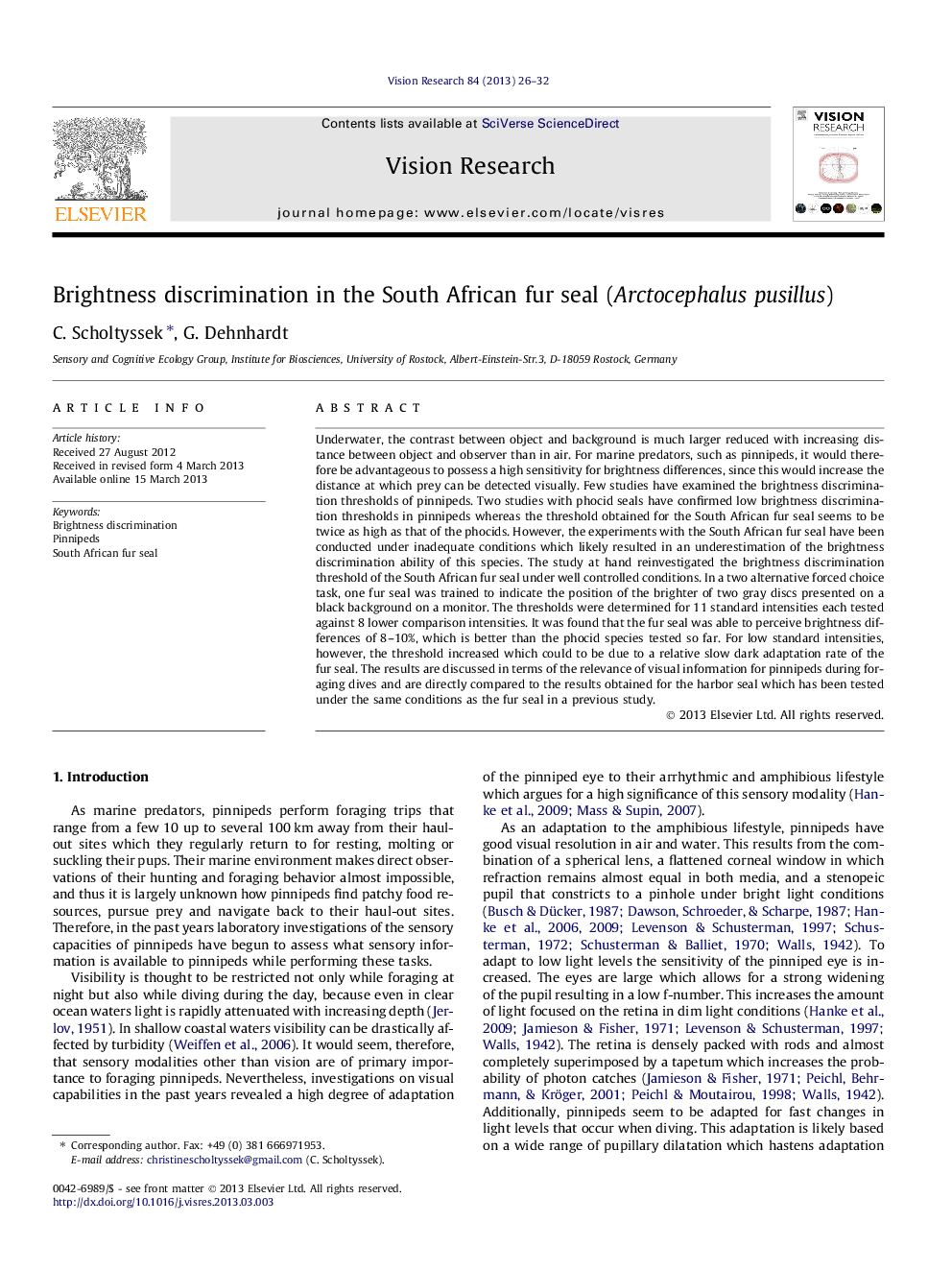| Article ID | Journal | Published Year | Pages | File Type |
|---|---|---|---|---|
| 4033823 | Vision Research | 2013 | 7 Pages |
•The brightness discrimination ability of the South African fur seal is examined and compared to that of the harbor seal in an earlier study.•The fur seal is still sensitive to brightness differences of only 10%.•This increases the distance up to which prey can be detected visually.•The results demonstrate that the fur seal’s brightness discrimination ability has been largely underestimated in previous studies.
Underwater, the contrast between object and background is much larger reduced with increasing distance between object and observer than in air. For marine predators, such as pinnipeds, it would therefore be advantageous to possess a high sensitivity for brightness differences, since this would increase the distance at which prey can be detected visually. Few studies have examined the brightness discrimination thresholds of pinnipeds. Two studies with phocid seals have confirmed low brightness discrimination thresholds in pinnipeds whereas the threshold obtained for the South African fur seal seems to be twice as high as that of the phocids. However, the experiments with the South African fur seal have been conducted under inadequate conditions which likely resulted in an underestimation of the brightness discrimination ability of this species. The study at hand reinvestigated the brightness discrimination threshold of the South African fur seal under well controlled conditions. In a two alternative forced choice task, one fur seal was trained to indicate the position of the brighter of two gray discs presented on a black background on a monitor. The thresholds were determined for 11 standard intensities each tested against 8 lower comparison intensities. It was found that the fur seal was able to perceive brightness differences of 8–10%, which is better than the phocid species tested so far. For low standard intensities, however, the threshold increased which could to be due to a relative slow dark adaptation rate of the fur seal. The results are discussed in terms of the relevance of visual information for pinnipeds during foraging dives and are directly compared to the results obtained for the harbor seal which has been tested under the same conditions as the fur seal in a previous study.
